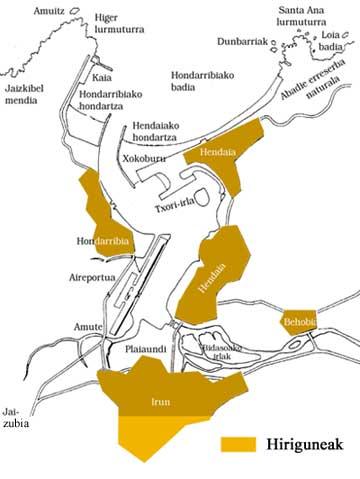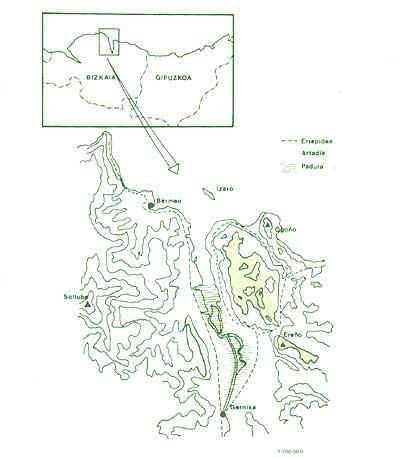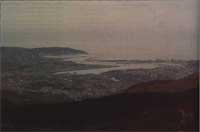Costa Vasca
1995/02/01 Estonba Mintxero, Mikel Iturria: Elhuyar aldizkaria
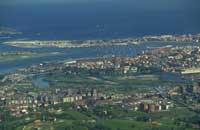
Four will be the ecosystems that we will work on in this study: marsh, dunes and beaches, cliffs and intertidal rocks. After an initial introduction describing the general characteristics for all of them, we will try to comment on the situation and the risks they have on our coast.
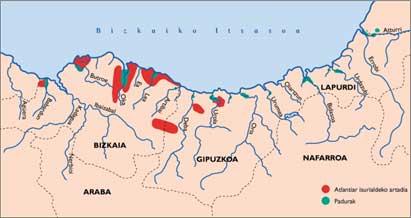
Marshes of the Basque Country
Due to the rugged orography of the Basque Country, our coast is full of rivers of small distance. In all of them, where the sea and river waters of Bizkaia are embraced, one of the most productive and bioversal ecosystems of our latitudes usually appears: the marine marsh.
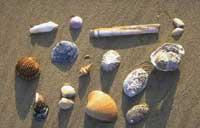
These wetlands, closely linked to the sea, which have been recognized for centuries as areas detrimental to health, have known numerous processes of destruction, since they have sometimes been used for the expansion of coastal populations and other times have dried up for the construction of industrial and tourist facilities.
However, the great ecological development known in recent years, by demonstrating that ecological productivity and biodiversity are real treasures, has radically modified its conception of these aspects.
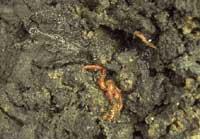
One of the main reasons for this great value are:
- In the rías, the current of the rivers stops due to the entrance of the sea. This causes the sedimentation of the lightest particles transported in suspension, creating sand banks and fertile beaches of silts. Thanks to the river flows, in these stimuli with high concentrations of organic matter, abundant populations of invertebrates (mollusks, crustaceans, annelids,...) tend to appear, a source of food for important bird and fish communities of these ecosystems.
- On the other hand, the mineral richness of the river flows, together with the low depth of the rivers, makes photosynthetic productivity in these aspects very high, due to the complexity of the trophic chains and networks of these ecosystems (which contributes to biodiversity).
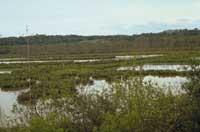 Marsh "Saint Martin de Seignant". The money and work of the rural hunters have allowed to recover this important wetland on the right bank of the Aturri.M. Estonba
Marsh "Saint Martin de Seignant". The money and work of the rural hunters have allowed to recover this important wetland on the right bank of the Aturri.M. Estonba - The strategic position of the Basque Country for the migration of birds in Europe, amid the funnel that form the Pyrenean and Biscayan seas, makes these wetlands important areas of rest and food.
- Although these areas are rich in nutrients, due to the fluctuations of water and salinity due to the marine tides, the species that appear in them, throughout the evolution, have had to appropriate curious physiological and morphological adaptations to colonize these silt.
- Finally, it should be noted that the systematic destruction of these ecosystems, and in general of all wetlands, in recent years, has given far more value and relevance to those who have been freed from this massacre, whose conservation and reproduction is one of the main challenges of our society.
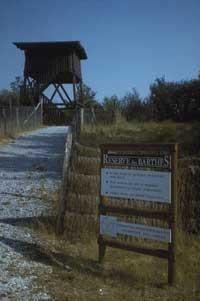 Marsh "Saint Martin de Seignant". The money and work of the rural hunters have allowed to recover this important wetland on the right bank of the Aturri.M. Estonba
Marsh "Saint Martin de Seignant". The money and work of the rural hunters have allowed to recover this important wetland on the right bank of the Aturri.M. Estonba
Once we know the main ecological characteristics of the marshes, we will now analyze the state of the marshes of the Basque Country.
Laburdi
Aturri
Aturri is undoubtedly the longest and largest river in the Basque Country. From its birth, in the vicinity of Tourmalet, to its mouth, it covers more than 300 kilometers, of which only passes through the last 30 kilometers of the Basque lands (marking the limit of Gascony).
On this long journey he receives numerous rivers and streams born in the Pyrenees. Consequently, the flow of its river is more important than that of the sea. This totally conditions the animal and plant species that can inhabit the native marshes, differentiating this marsh from the rest of the Basque Country.
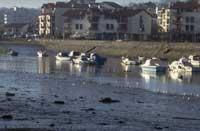
However, of what in its day would be the largest marsh in the Basque Country, only a few small remains remain, the fight against flooding, obtaining agricultural land and the expansion of ports and cities of Baiona-Anglet, which have completely channeled the mouth of the Aturri River.
Enough with the XIX. Study of the plans of the area of Baiona of the eighteenth century, to verify that Bayona itself and all its port facilities are built on the marshes of the rivers Aturri-Errobi.
There are three barrenderings that have gotten rid of these desiccations. On the one hand, from Baiona, in the meander that describes the Aturri river on the left, there are important reservoirs of marshes and silt on the right bank of the river.
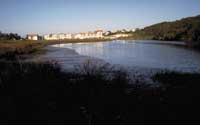
On the other hand, a little further back, in the islands of Atur, Lehuntze, Urketa and Ahurti, several fragments of marshes have remained among the beautiful riverside forests. In one of them, specifically on the island of Berex, you can see the largest colony of the common Amiltxori of Euskal Herria ( Nycticorax nycticorax), as well as the large nesting population of the white garceta ( Egretta garzetta).
Finally, it should not be forgotten that, on the shores of the town of Saint Martin de Seignant (to the right of the Aturri), about three years ago, as a result of the work of the hunters of the Landes, a large part of the dry marshes for agricultural exploitation has been irrigated, since then, this wetland for birds, which has become an important enclave.
Nest
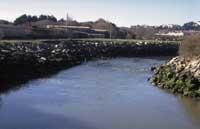
This small river, about 20 kilometers long, flows into the beach of Bidarte of the same name, in a wonderful estuary that opens between Getaria and the inclined cliffs of Bidarte.
However, the brutal tourist development of the labor coast during recent years has caused this mouth to have lost its main ecological values, since the channeling of the river has completely destroyed its marsh and has suffered a brutal beating after the construction of a parking on its surface.
Urdazubi
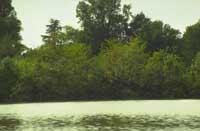
It is enough to carry out a small geomorphological study of the territory currently occupied by the villages of Donibane Lohizune, Ziburu and Socoa, in which it was believed that until a few years ago one of the most beautiful wetlands of Euskal Herria could be seen.
However, the irrational development of tourism and the alleged actions against the floods have limited this beautiful and large marsh to small and threatened spaces that have remained silent witnesses of the past.
The most important are located in the estuary of the Urdazubi/Urdax, which is born around the port of Otsondo. Although the end of this estuary is fully channeled and urbanized, between Azkaine and San Juan de Luz has preserved on its left bank, next to the highway, the wonderful humid areas and marshes that today have lost their influence.
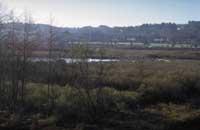
However, these two aspects are threatened by the proposal of an anti-flood project that proposes the channeling of the river and the intention to build a new motorway exit, as it could destroy the wetland and the marsh, together with them the most important wetland in the North.
Finally, it should be noted that after the urbanization that has completely disfigured and channeled this estuary into the mouth of the river Untxin on the left bank of the bay (Sokoa), remains of marshes have been preserved. These last vestiges are also threatened; from here soon, another urbanization will replace these last remains, if we can not paralyze this project.
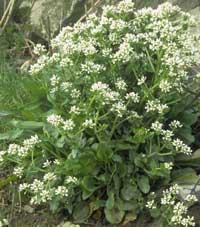
As far as the vegetation of these areas is concerned, although it does not present difficulties to fix the riverside vegetation and the waters of the river, the marshes are affected by the increase of water and salinity of the marine tides, as well as by the great anorexia of the substratum due to the great compactness of the silts, in the plant species present in these ecosystems, by the appearance of curious evolutionary adjustments.
In these adaptations, it is worth mentioning those related to the regulation of osmosis (pressure differences between the living organism and the environment), plant species that suffer huge drops of salinity in very short periods of time.
In those cases where the external salinity is superior to the cytoplasm of the cells, the most notable would be the presence of fatty tissues that prevent water loss or the ability to excrete salts.
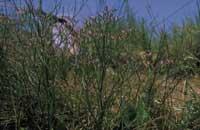
On the other hand, it is common to find empty roots and stems in the plants of the marshes, thus overcoming the anaerobic conditions of the silts.
However, the influence of these factors is not the same in the entire extent of the marsh, as the in-depth study of the vegetation shows, since ecological gradients are generated.
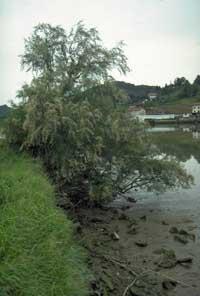
In the lower places, that is, in those that only remain in the low tides without flooding, usually appears the association Zosteretum noltii, species of Zostera nolti algae phanergamo. Unfortunately, the high sensitivity to contamination of this plant, although in Txingudi a few have been found, has practically disappeared in our rías, since the only population to consider is Urdaibai.
Above, on the beaches of silts with less hours of immersion, we find grasses of the genus Spartina with long and erect stems. We can find three different species of this genus in our marshes, which are part of the association Spartinetum maritimae: the own Spartina maritima, Spartina towsendii, which has appeared as a consequence of the hybridization between both and the alterniflora Spartinetum maritimae, coming from an America that obviously excludes the former.
In these areas, but still a little higher, there are also the specimens of Salicornia ramosisima, Aster tripolium, Mount Spergularia,... all of them including the associations Salicornetum ramosisimae.
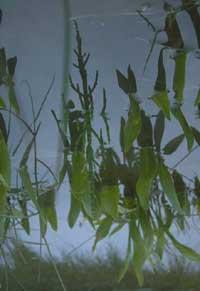
Finally, in the higher parts of slopes and marshes, where only they are submerged in the high tides alive, while the living conditions are softened, there are numerous species of low tolerance of the associations Puccinellia maritimae, Arthrocnemetum fruticosi and Limonio-Juncetum maritimi, as Juncus maritimus speciftimal, Specifsi
It should also be noted in recent years the shrub of Baccharis halimifolia from America, which is colonizing large areas of the area (displacing native vegetation and causing eutrophication problems due to its rapid growth).
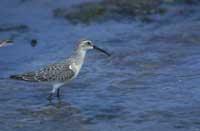
As mentioned above, marshes have very high photosynthetic productivity. Consequently, the trophic chains and networks of these ecosystems are often very complex, with birds being the most striking witnesses of this wealth.
But we cannot forget that the base of this abundance of birds is the silt and the invertebrates that inhabit the water (annelids, crustaceans, molluscs...) and the fish, which constitute the diet of birds.
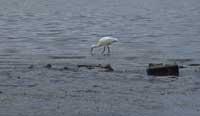
In any case, when talking about birds, it should be noted that the strategic position of the Basque Country for birds in Europe gives greater value to our marshes. Since the Basque Country is located in the most important migratory axis of birds in Europe, we must add to the populations of nesting birds of these marine wetlands, in times of migration, a large number of species that use the marshes as a source of protection and food, since the Pyrenees become an impassable obstacle for the birds that cross the Iberian peninsula, that go to the ends (Basque Country and Catalonia).
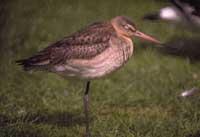
If we add to all this in days of storm migratory and wintering seabirds that approach the coasts and rías, it is understood that some wetlands of our coast are recognized as areas of international importance (Urdaibai, Txingudi, Zumaia,...).
The attached table contains the main species of birds present in the marshes of the Basque Country.
Carrizales

NESTING
Carrizales and strollers ( Acrocephalus sp. and Locustella sp. )
Chickens ( Gallinula chloropus)
Chickens ( Rallus aquaticus)
Requesón ( Cettia cetti)
Birds ( Cisticola juncielis)
MIGRANTS
Common txontas ( Fringila coelebs)
Green swamps ( Emberiza schoeniclus)
Papaurdinas ( Luscinia svecica) Lentils
( Remiz pendulinus) Chickens
( Rallus sp. and Porzana sp. )
Mirlos Álava ( Sturnus sp. ) Common
bird bull ( Botaurus stellaris)
Amiltxori txikia ( Ixobrychus minutus)
Swallows ( Hirundo rustica)
River marsh areas
NESTING Arid ( Cettia
cetti) Kingfisher ( Alcedo atthis)
MIGRANTS
Paladares ( Emberiza
schoeniclus) Robin
( Erithacus rubecula) Popcorn
( Streptopelia turtur) Coturnix coturnix
) Cicadas
( Vanellus vanellus) Brochetas
( Trturnix Coturnix
Petillas ( Nylcus). )
Silts and sandy beaches
MIGRANTS
Limícolas
Timbres ( Calidris sp. and Pluvialis sp. )
Chorlitejos ( Charadrius sp. )
Archibebélagos ( Tringa sp. and Limosa sp. )
Kurlints ( Numenius sp. ) Spatula (
Platalea leucorodia)
Sea crumbs ( Haemantopus ostralegus)
Abozetas ( Recurvirrostra avosetta)
Zancudos ( Himantopus himantopus)
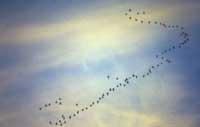
Similar
Geese ( Anser sp. )
Ducks and pigs ( Anas sp. )
Porrones ( Aythya sp. )
Ardeidos
Garcetas ( Ardea cinerea)
Garcetas ( Egretta garzetta)
Interior waters
MIGRANTS
Colimbos ( Gavia sp. )
Porras and brezales ( Podiceps sp. )
Eider ( Somateria mollisima)
Saws ( Mergus sp. )
Cormorants ( Phalacrocorax sp. )
Paita ( Tadorna sp. )

Gai honi buruzko eduki gehiago
Elhuyarrek garatutako teknologia




